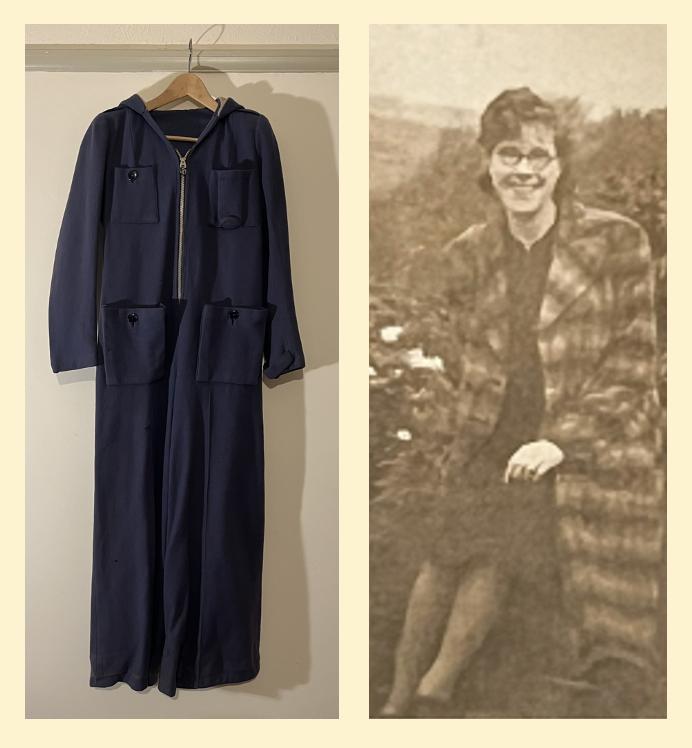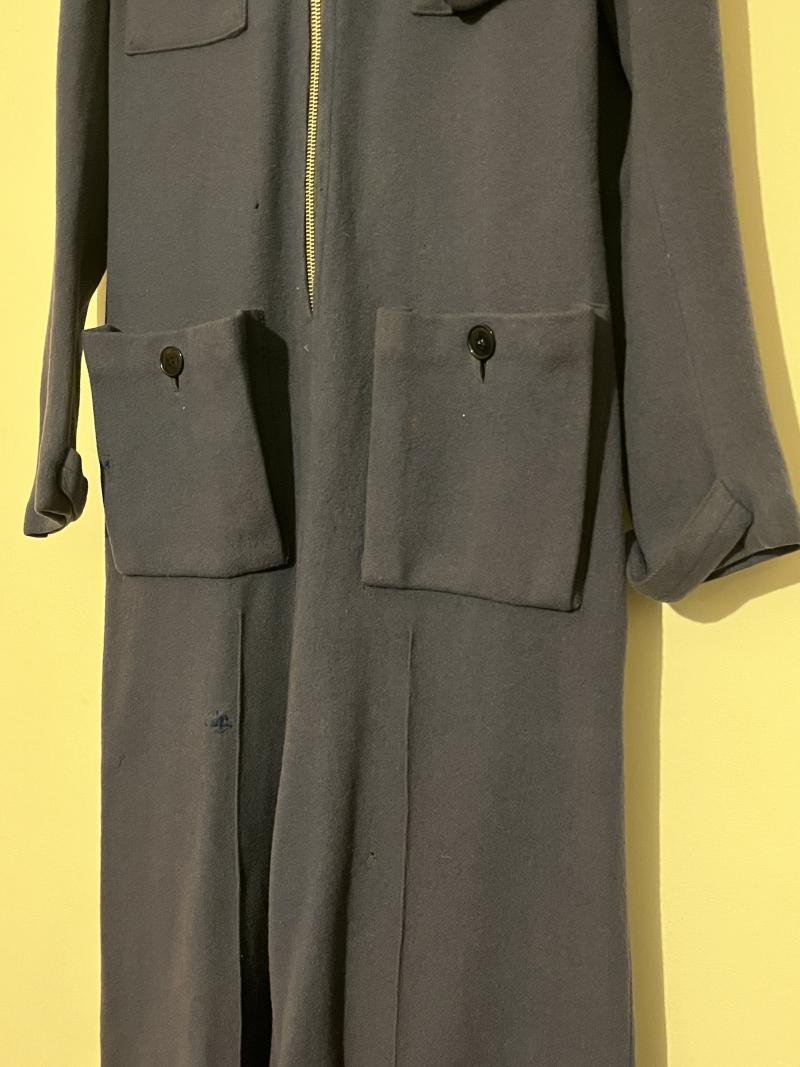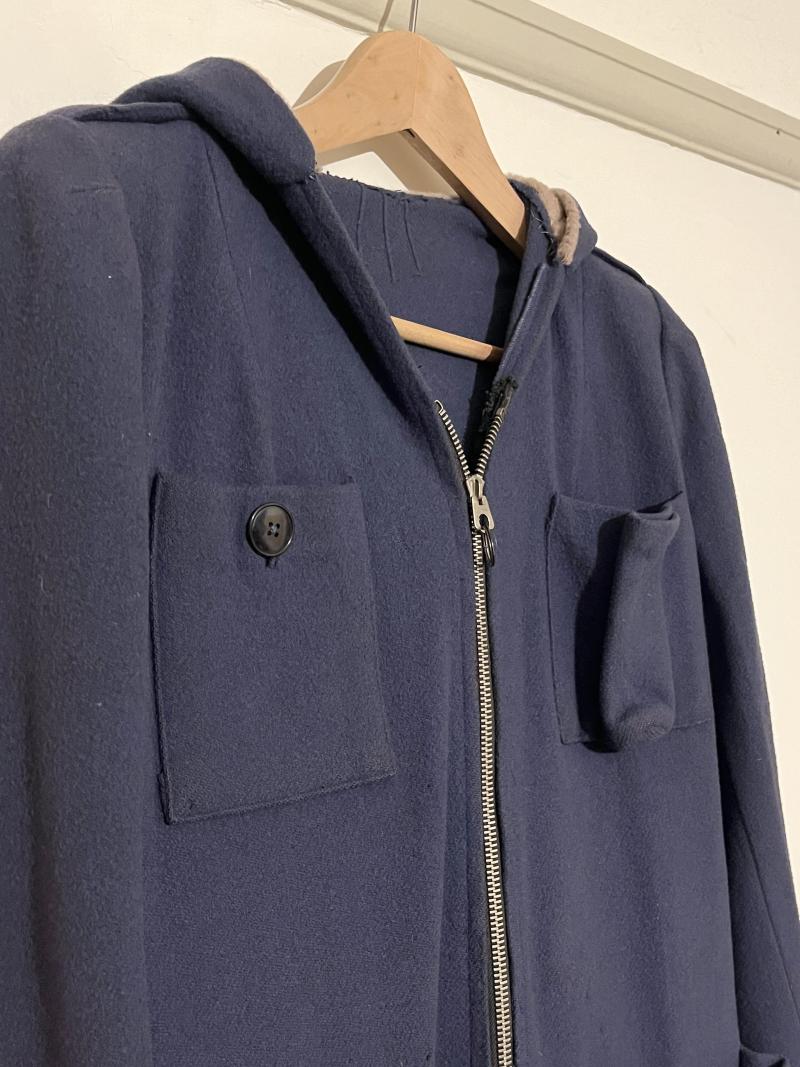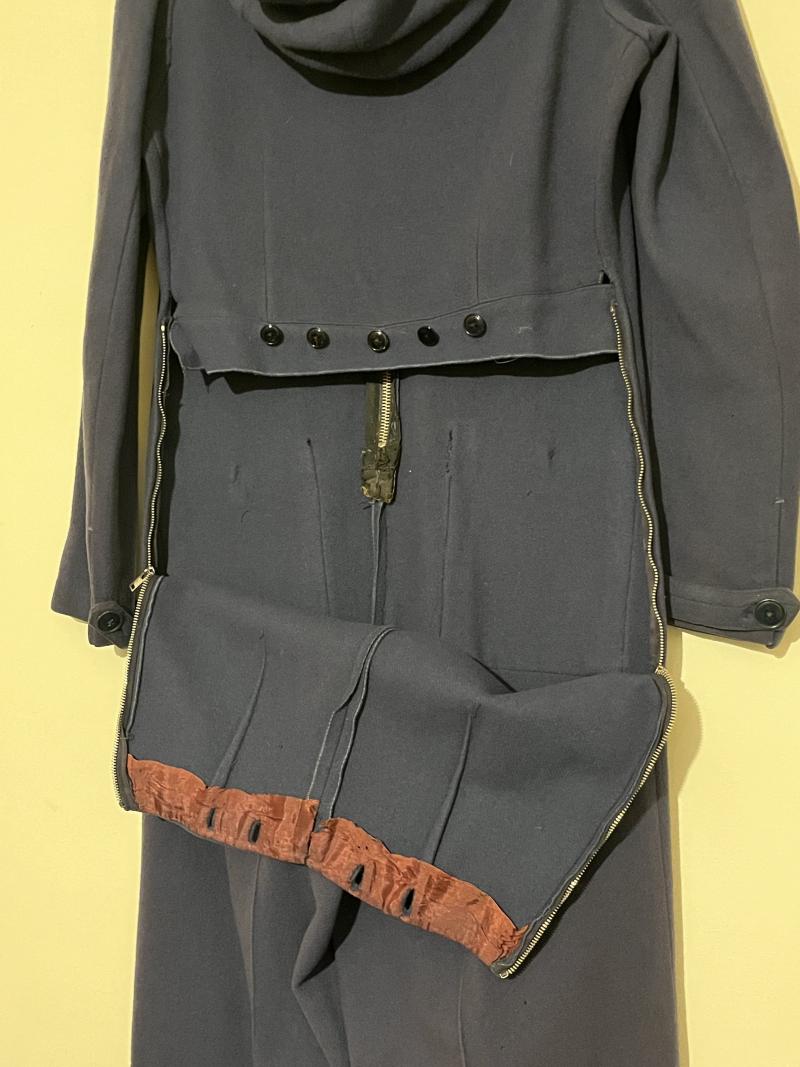WW2, British, SUPER RARE, ‘Siren Suit’ with Attribution and Essential Shelter Pocket Fillers.
An incredibly rare survivor, this Siren Suit is new to the market, is in remarkably good condition and can be named to its owner; Phyllis Purkiss.
The suit was a one-piece garment for the whole body, resembling a boilersuit, which could be taken on and off quickly during times of air raid activity. The suit solved the problems of warmth and modesty when taking shelter during night-time bombing, they were roomy, allowing them to be pulled over the top of nightclothes at the sound of the siren, hence the name, Siren Suit. They were worn by both children and adults when sheltering in either private or public shelters.
It is said that the suits were popularised by Churchill who was often seen wearing them in public, even to the extent of them being worn when meeting other world leaders such as Roosevelt and Stalin.
Siren suits were constructed in a loose-cut design, with zippered or button closures, an optional belt, and large simple pockets. The suits were made of many fabrics, most typically wool, cotton, or other materials available under clothing rationing. They could be bought ready-made or could be hand-made with a pattern and available fabrics. Some suits, as with this one, had a panel at the back that opened to allow the wearer to use a toilet without removing the entire suit.
In addition to being protective gear, siren suits for women were fashion statements and were marketed as such to avoid causing fear regarding the threat of raids. Some women claimed wearing the siren suit "protected their modesty" in a comfortable way.
This example appears to be ‘homemade’ from wool and consists of a faux, fur lined ‘pixie’ hood, ‘epilates’ and shoulder pads, four patch pockets (with the addition of a touch pocket to the left breast pocket), full length ‘Lightning’ zip and a five buttoned and zipped back panel. The fabric is of ‘RAF’ blue, with, as can be expected from a garment of this age, one or two minor moth holes and grazes and a few contemporary ‘darned’ repairs. All buttons are present but at some point, in its life the trouser hem has been ‘let down’. The family tell me it is size 10-12
The original owner was Miss Phyllis Purkiss, born 1917 in Southend on Sea, Essex. She married in 1941 and lived a happy life, well into her 70’s (copies of the photos of Phyllis will be supplied).
Note: In addition to the suit, we have added the missing torch for the torch pocket (in FULL WORKING ORDER), first aid guide, tin of essential shelter ‘bits & bobs’ (smelling salts, ear plugs, sewing items, safety pins, thimble, dressings, etc.) and a copy of the October 1942 ‘Lilliput’ magazine.
Priced to reflect the condition and absolute rarity of this very sought after item, please refer to the photos as they form part of the description.
Code: 443










